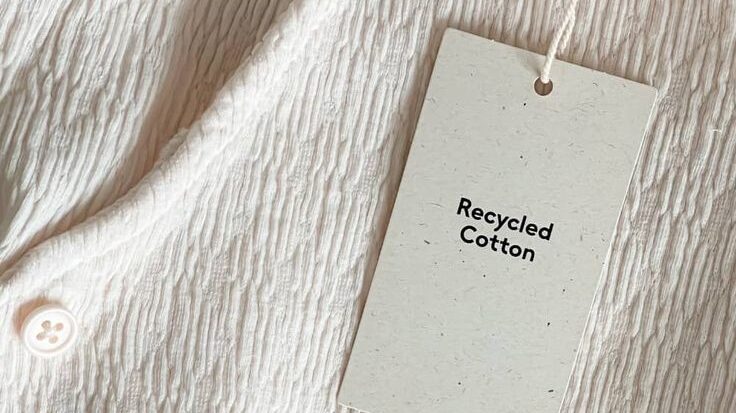Climate change is a global issue, and its effect has been hazardous all over the world. Industrialization has contributed to an increase in pollution levels. The textile and apparel industry are one of the major contributors to greenhouse gas emissions According to research conducted, the early estimate suggests that the apparel industry will contribute more than 25% of carbon dioxide by the year 2050. While apparel industry is now taking steps to tackle this problem, and one such solution for it is carbon neutrality. Many factories are transforming into carbon neutral apparel factories. Carbon neutrality is maintaining a balance between emitting carbon and absorbing carbon from the atmosphere. It is done by reducing greenhouse gas emissions and investing in projects that help to absorb carbon.
7 Methods through which carbon neutrality can be achieved in apparel manufacturing

Image credit: pinterest
1. Carbon Offsetting
Carbon neutral apparel factories can invest in carbon offset projects. The concept is about funding projects that help to reduce or remove carbon dioxide from the atmosphere. This acts as compensation for greenhouse gas emissions produced through the process of apparel manufacturing. They can invest in initiatives like reforestation or in renewable energy programs. This helps to reduce carbon footprints and contribute to reducing climate change.
2. Transport Optimization
It is an important factor that can be achieved by carbon neutral apparel factories. Factories and manufacturers can use new technologies and software to determine an easy and efficient route for product delivery. This also shortens the travel distance and helps to reduce fuel consumption. They can also combine multiple orders into a single shipment, which can reduce the emissions caused by vehicles used for transportation. Using more sustainable routes, such as public transport or water routes, will further reduce greenhouse gas emissions. Factories can invest in energy-efficient vehicles that consume less fuel or renewable energy, which also helps in reducing carbon footprints.

image credit: pinterest
3. Standards and Certifications
This plays a vital role in guiding apparel manufacturers towards carbon neutrality. Some key certifications and frameworks include global organic textile standards that ensure the organic status of textiles or carbon neutral certification that provides framework certification for businesses to achieve carbon neutrality by measuring and offsetting emissions. It helps them to implement sustainable fashion practices and track progress towards carbon neutrality.
4. Efficient Energy Techniques
It is one of the key components that can be achieved by carbon neutral apparel factories. Factories can invest in energy-efficient machines and equipment that consume less power and are good in terms of performance. They can use machines that work through green energy, as that causes no harm to the environment by any means. Using smart lighting and heating and ventilation systems, which helps in reducing carbon footprints.
!! START YOUR FREE TRIAL !!

image credit: pinterest
5. Carbon Accounting
It is an important and a bit complex process of measuring, managing, and reporting about carbon emissions. It is to understand the carbon impact caused on the environment because of their business. It helps to identify if there can be any improvement in the performance for creating low carbon emissions in the future. There are two methods for measuring carbon emissions. First is spend-based, which is an assumption that all energy is carbon-intensive. The other one is activity-based, which is based on the assumption that all activities conducted by carbon neutral apparel factories are of different carbon intensity. It considers every particular activity that a factory conducts to measure the reduction carbon footprints.
6. Supply Chain Transparency
Transparency throughout the supply chain is important for identifying and addressing carbon emissions. By communicating and partnering with committed suppliers about sustainability and ethical practices, carbon neutral apparel factories can work together. Which will help to reduce emissions and improve performance across the chain. They can also source materials for manufacturing locally to minimise the distance. This also helps them in reducing their carbon footprints while also supporting local communities and the national economy.

image credit: pinterest
7. Sustainable Materials
One of the primary and important approaches for maintaining carbon neutrality is using sustainable materials for sustainable fashion practices. Materials like cotton and polyester produce a high carbon footprint due to immense chemical usage. But it has alternatives like organic cotton, recycled polyester, or bamboo-based materials that help to reduce carbon footprints and contribute towards sustainability.
!! START YOUR FREE TRIAL !!
How Maker’s Row Can Help To Achieve Carbon Neutrality In Apparel Manufacturing?
The fashion industry is now adapting the concept of more carbon neutral apparel factories to deal with greenhouse gas emissions caused by apparel manufacturing. Though it is a long way to go and achieve it, existing brands can influence new brands about sustainability and carbon neutrality. Maker’s Row is a platform that supports new local brands to connect with the best manufacturers and factories in the apparel industry. They also provide industry insights from experts to guide about the right path and turn brand ideas into reality.

image credit: pinterest
Conclusion
Carbon neutrality is a new way of thinking and solution for reducing carbon footprints and greenhouse gas emissions. While there are certain challenges, slowly carbon neutrality as a concept is growing and awareness is being created. There is environmentally friendly consumption of garments from consumers. Global regulations too are making the apparel industry committed towards taking steps for reducing carbon footprints and following sustainable fashion practices.
You Can Also Read..